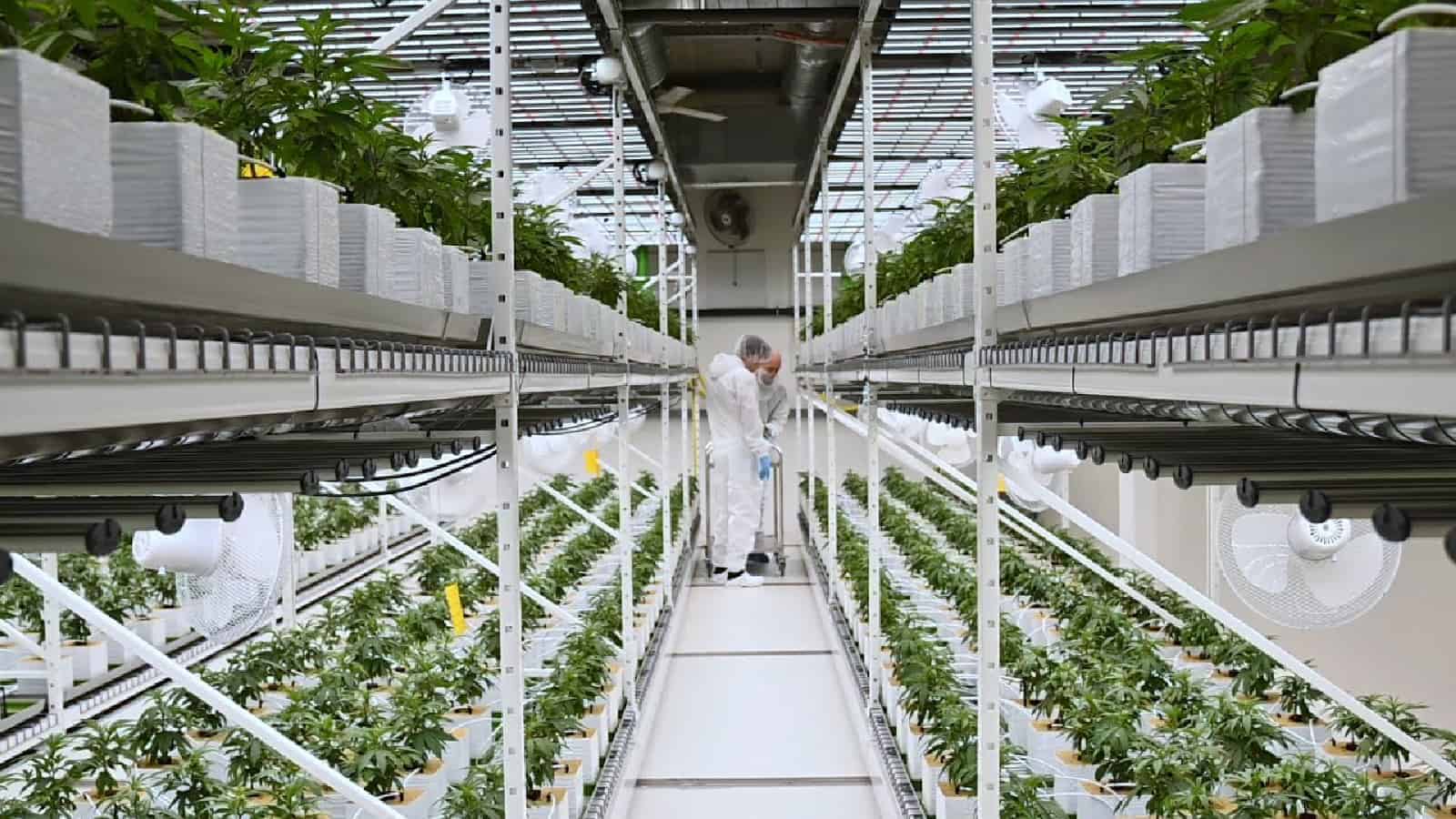Indoor cannabis cultivation is expensive. Even for experienced growers who start their seasons with most of the supplies they need, there are still massive electric bills to power lights, ballasts, and temperature control equipment. On top of that are labor costs, regulatory fees, and rent or mortgage payments on the location.
But, one new trend in growing marijuana strains is to implement the practice of indoor vertical farming to cultivate. This practice saves space and money and has been a revolutionary move for farmers focused on foods and herbs. Could it be a saving grace for the cannabis industry?
What is Indoor Vertical Farming?
The concept of vertical farming was proposed by a Columbia University professor, who, along with his students, designed a ‘skyscraper farm’ that would produce enough food to feed 50,000 people. Indoor vertical farming is the practice of growing plants on top of another in stacked or layered columns. The indoor environment is closed off from any natural light, and the temperature and humidity levels are closely regulated and monitored. This practice was popularized by companies like Aerofarms, Plenty, Green Spirit Farms, and Gotham Greens.
There are two primary ways to grow vertically indoors. The first is to stack plants vertically on a series of shelves. Each row of shelves has its own LED lights, and the plants are frequently pruned and trimmed to keep them at an appropriate height for their shelves.
The True Vertical
The second method of vertical farming is referred to as ‘true vertical’ and the plants grow outside of a column and stand freely in the room. The food and nutrients are fed through the columns, and the plants fill out around the outsides. Lights can be placed anywhere that allows for the most absorption. This is a popular option for home growers who choose to grow outdoors rather than indoors because the columns love the sun.
When talking about cannabis indoor vertical farming, it is the stack method that we are referring to. Vertical shelving saves on space in a big way. It’s also unique because it doesn’t necessarily require the same setup as regular indoor growing. The reason that this practice is new to the cannabis world has a lot to do with the evolution of lighting technology.
In the past, high-pressure sodium lights (HPS) were the primary source of lights for indoor grows. However, these lights are very hot and will scorch the tips of leaves if placed too close to the plants. Consequently, is a massive problem for plants that want to grow big and tall. But now, most indoor growers are using LEDs that run much cooler and are friendlier to the environment. In addition, LEDs can sit inches from the top of the plant canopy and cause zero harm to the foliage.
Types of Indoor Farming Systems
Indoor vertical farming offers growers many options for how you want to feed and water your plants. Unlike outdoor gardening, planting in the soil is not the only option.
Hydroponic
Hydroponic growing is a soilless planting setup that uses water to grow and nurture the plant roots. The cannabis plants are grown in buckets filled with a medium like hydroton and the buckets are suspended over a container of water.
The water is filled with nutrient-dense plant food to support the life cycle of the cannabis at various stages. There are air stones inside the water tank that help to aerate the water and a pump to keep it moving. This method allows you to greatly control the amount of moisture and nutrition the plant receives. It often results in much chunkier buds than a similar-sized plant grown in soil.
Geoponic
Geoponic growing is not a new method, but it has evolved significantly in the past decade. Geoponics focuses on organic, living soil rich in nutrients, beneficial bacteria, and fungus that plants naturally need to thrive. This is much more complex than simply putting cannabis into the dirt, and there are many schools of thought on what the best medium mix is.
However, some strains crave differing nutrients during their lifecycle, and growers must learn to adapt to changes in the plant and accommodate the needs. Mostly, the plant and the soil work in harmony together as nature intended, and the grower focuses more on the needs of the soil than on the needs of the plant.
Aeroponic
Aeroponic growing is a method where the cannabis is planted in a tray with the roots dangling into a chamber underneath. They are allowed to grow and hang or gather into independent root clusters. Growers keep the plants wet by spraying them with water or using an automatic misting system.
The roots must always stay wet for the plant to survive, and the water chamber is supplemented with nutrients. This is a common starting method for cloning cannabis and nurturing babies. Still, aeroponics can be used when indoor vertical farming for the plant’s full lifecycle and is said to produce high-quality buds.
Advantages of Indoor Vertical Farming
Aside from saving space, there are many benefits that make indoor vertical farming attractive to cannabis cultivators.
Cut Costs of Labor
Labor adds up quickly in any kind of growing environment. However, with a smaller space and more technology used to help control the environment, less labor is needed.
Conserves Energy
If set up correctly, vertical farms reduce water and energy use and grow tech has evolved to support energy conservation. Specialized equipment with cameras and sensors can help control the amount of light, humidity, and temperature throughout to conserve energy.
Quality Harvest & Maximum Yield
Since indoor farms utilize specially designed equipment to control everything about the plant’s environment, growers face little risk of crop damage. The grow room will never face a hail or wind storm or adjust to light variances in the change of seasons. For the experienced grower, indoor cultivation becomes a precise science, increasing harvest yields and producing aesthetically pleasing buds ripe with untouched trichomes.
Sustainable & Environmentally Friendly
Since indoor vertical farming saves on space, growers aren’t limited to warehouses and other industrial buildings on the outskirts of cities. With fewer real estate needs, growers can work closer to towns and resources to reduce their carbon footprint for distribution.
No Pesticides or Herbicides
In a highly controlled indoor environment, the chances of bug infestations are severely reduced. This further supports the goal of organic cannabis farming and eliminates the need for harmful pesticides and herbicides.
Final Thoughts
As cannabis tech continues to evolve, more and more indoor growers will likely adopt the practice of vertical farming. It’s certainly a more sustainable and affordable way to grow superior cannabis and makes good sense for this growing industry.







